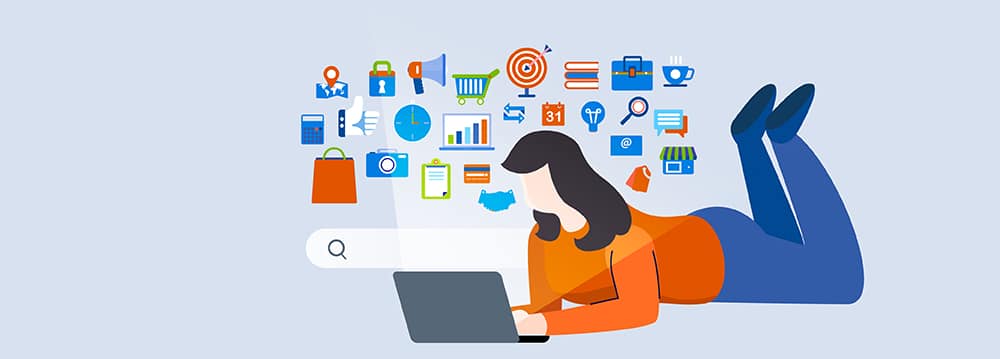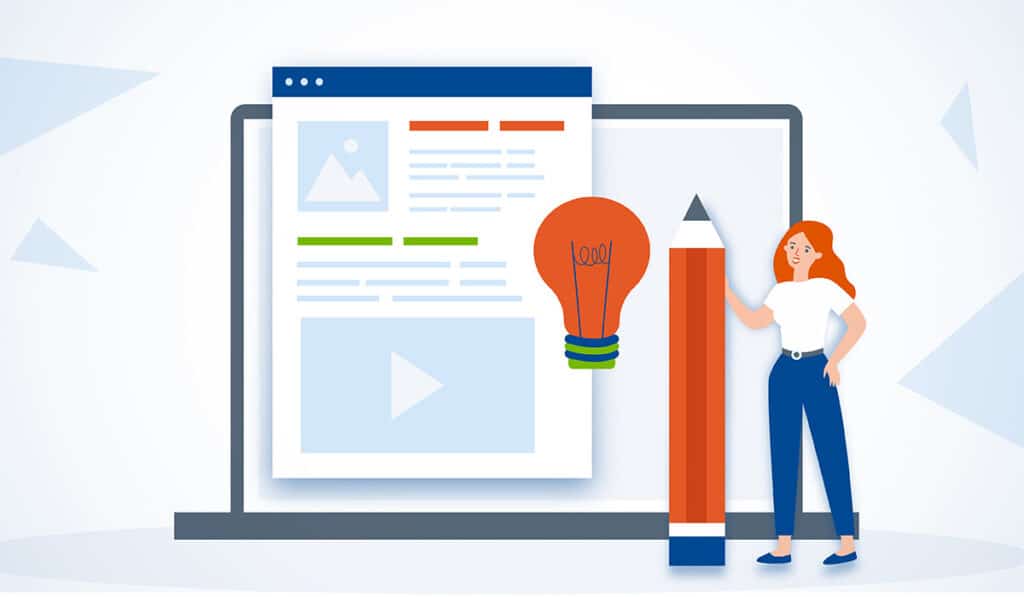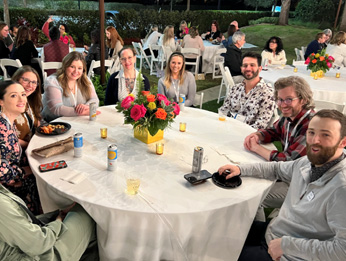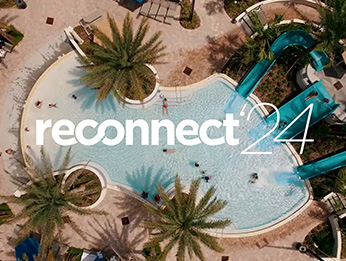As we all know, hearing technology is rapidly advancing, and new products are hitting the market every few months. From a marketing perspective, it’s important for providers to understand their patients’ relationship with technology adoption.
Remember, everyone’s relationship with technology is different. Take the iPhone for example: some people will camp outside of an Apple Store just to be the first to own the latest model, some wait for their techie friends to try it first, and others refuse to upgrade their phone until they absolutely have to do it.
But what about hearing devices?
Interestingly enough, there’s a very similar application of how patients adopt new hearing technologies. Below is CQ’s take on the technology adoption curve applied to the hearing industry.
Based on nearly seven years of data and a sample size of over 70,000 patients, this curve points to insights on the different segments of your database, their relationship to new technologies, and the marketing touchpoints to drive conversions.
As a practice owner, how often do you think patients upgrade their hearing devices? Every 5 or 10 years? Our data shows that on average, patients upgrade their hearing devices every 3.6 years. If you want to ensure patients don’t go somewhere else to purchase their next set of hearing aids (which 40 percent of patients do), the below graph illustrates the number of times you need to contact your patient to ensure your patients remain loyal to your practice and purchase their next set of hearing aids from you.
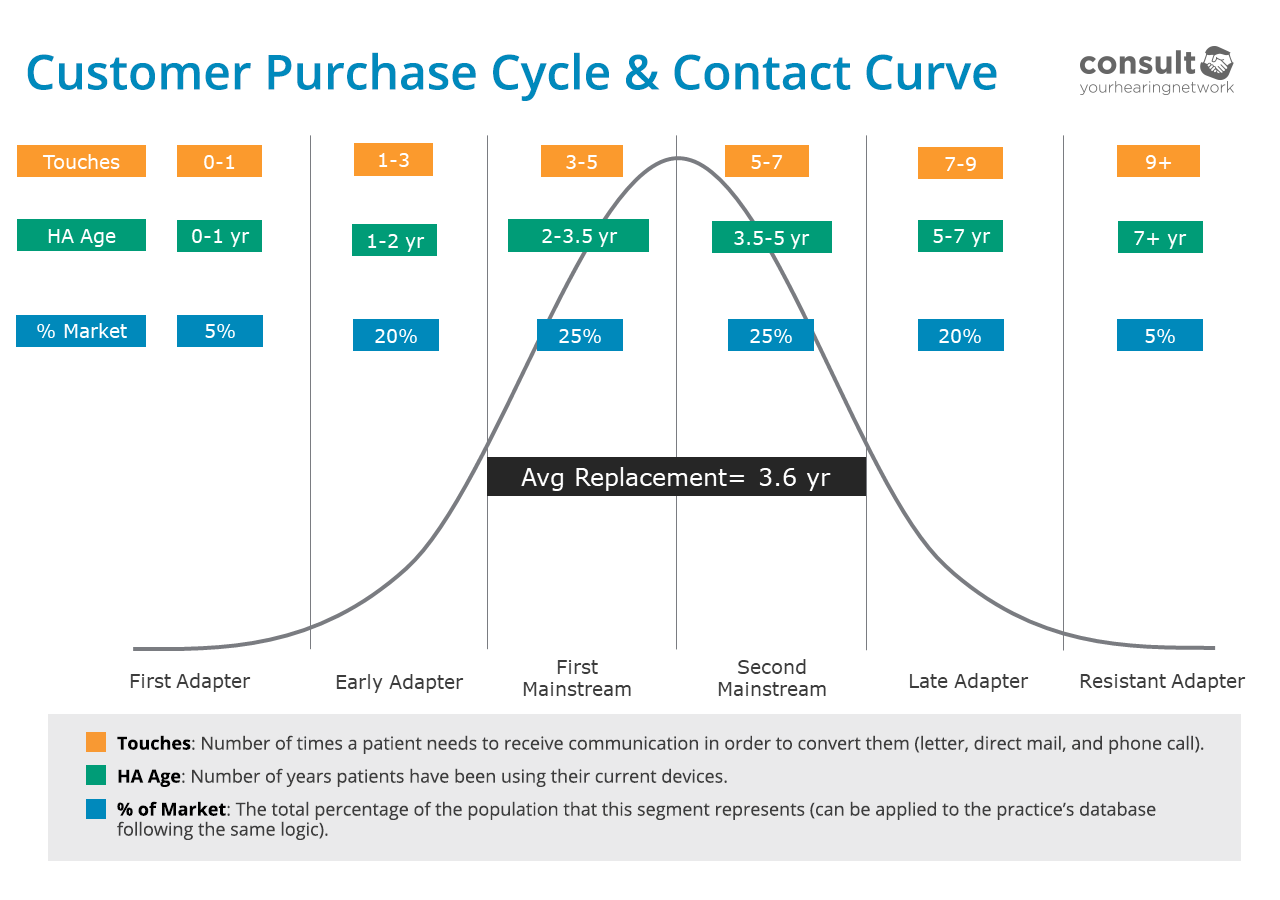
FIRST ADAPTERS – Innovators
Also referred to as techies and visionaries, these are the patients who are eagerly awaiting the next hot device to hit the market. There are no sensitivities to price or technology for these folks. They are current users with a hearing aid that may even be less than a year old. Because of their readiness to purchase new technology, they only require a couple of touchpoints or marketing interactions to drive conversion.
Focus on the bells and whistles of the technology – what are the latest and greatest features that are really going to wow this audience? Remember, the first adapters may be the first to kick off sales of a new product, but they only represent five percent of current hearing aid users.
EARLY ADAPTERS – Enthusiasts
Although very similar, there are some key differentiators between first and early adapters. This group of customers value new technology but have purposely waited to make a purchase. They’re more hesitant to test drive new products and will most likely look to resources and reviews to consult first before purchasing. Gathering testimonials from your innovators (first adapters) will help move the early adapters along in their purchase decision.
1st MAJORITY – Pragmatists & 2nd MAJORITY – Conservatives
This is where a new device really gains momentum – it has now been road-tested and has built some credibility in the marketplace. The first and second mainstream customers are the peak of our contact curve, representing the majority of untapped opportunities. So, you want to make sure you are hitting this audience with the necessary touchpoints and the right messaging to convert them.
At this point in their hearing health journey, they are hovering around that 3.6-year mark of average device replacement. It’s important to tout the proven applications of your technology – not just the bells and whistles – how these new applications will impact real-life users in everyday situations.
This segment requires more nurturing – between 3-5 touchpoints for first mainstreamers and 5-7 for second mainstreamers. But making up 50 percent of hearing aid users, they’re worth it!
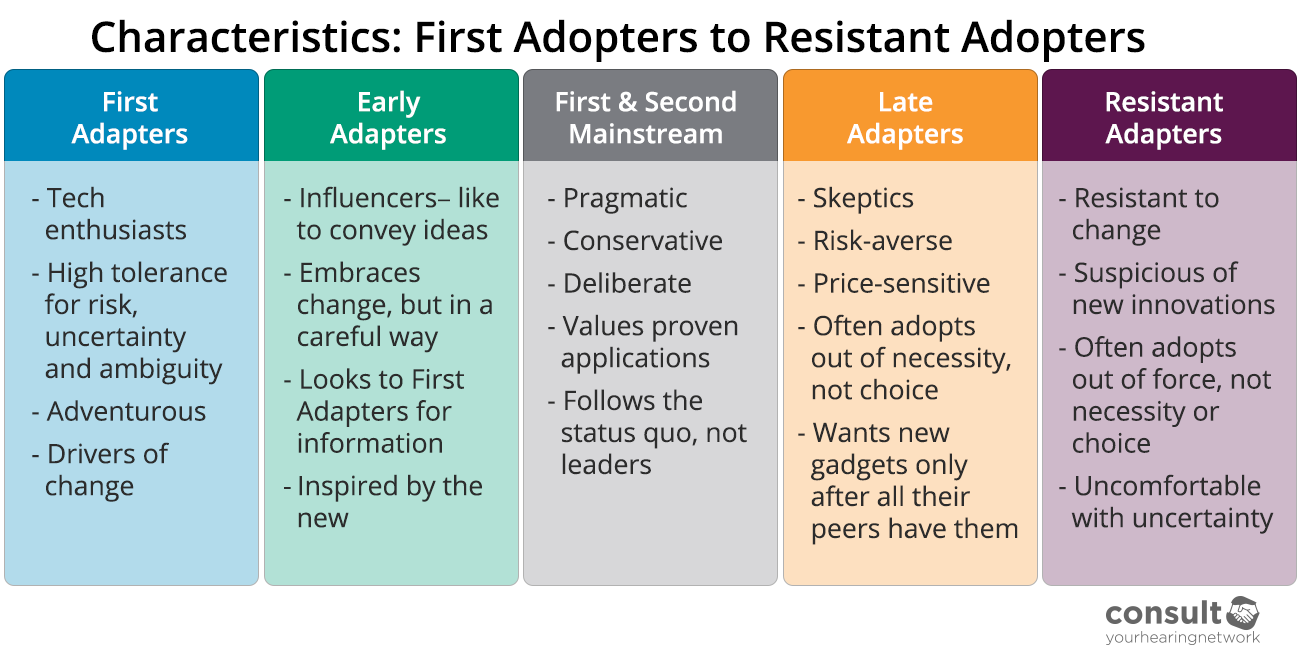
LATE ADAPTER – Skeptics
By this point, the newest technology has been on the market for some time. Anyone making a purchase after a product’s introduction is considered a late adapter or a skeptic. They are risk-averse and price-sensitive, so these individuals need the benefits of upgrading their hearing aid devices to significantly outweigh the cost.
If you can afford to offer discounts, value-added services, and/or accessories with a hearing aid purchase, this may be the only thing to entice this group. Be mindful though of the number of touchpoints required to convert skeptics: between 7-9 interactions.
RESISTANT ADAPTER – Resisters
Finally, the resisters. This is a group who are, yep, you guessed it: resistant to change! More often than not, this group of customers will only upgrade when they absolutely have to. Because they represent a small percentage of hearing aid users and require constant nurturing to convert, they are too costly (of your time, money, and energy) to build a separate marketing strategy around.
Of course, these patients are no less deserving of better hearing and can still benefit from your care – we just recommend focusing on other motivations outside of tech, like wellness, when marketing to this group.
If you want to learn about more ways to engage with your database, reach out to your Account Manager and schedule an appointment with the CQ Marketing Team.

